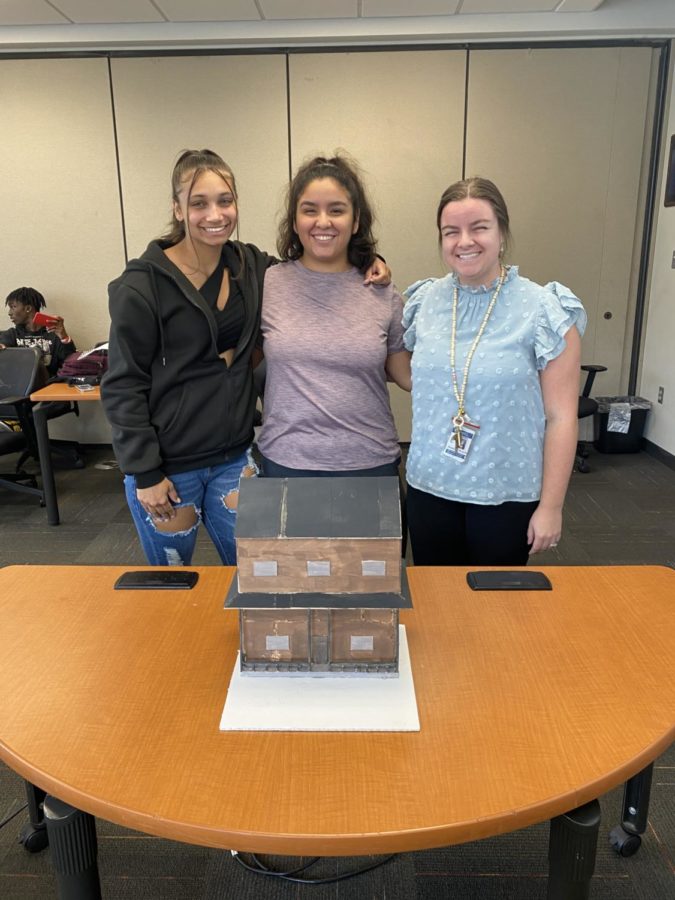Engineering lacks women
Destinee Anderson, 11, Samantha Mejia, 12, and Jessica Koch stand together around Mejia’s house project. The house was made in Koch’s engineering class.
October 16, 2022
Equipment clashes together. The sounds of students speaking and working together fills the open room. Thoughts are racing and ideas are spark-ing as the students in room 135 work on their engineering projects.
The engineering students of Omaha North High School collaborate with their partners to build their own miniature houses made from cardboard foam.
Although this may sound like an aver-age school classroom, there is one thing that stands out.
There are only two female students in the entire classroom.
Jessica Koch, an algebra teacher at North, is now teaching engineering for the first time. She has enjoyed teaching engineering so far, although it is different from math.
“I remember when I was in high school,” Koch said, “even there wasn’t a lot of female students taking those classes either.”
Koch is disappointed, but not surprised, at the fact that there are so little women placed inside of her classroom.
Two girls enrolled in the engineering class are Destinee Anderson, 11, and Samantha Mejia, 12. The girls were both put in-side of this classroom having no knowledge that there would not be any other female students like them.
“It doesn’t matter to me cause I get along with the boys,” Anderson said.
If Anderson ended up in an engineering career, she would partake in urban planning, which is the preparation of plans for the management of towns, cities, and metropolitan regions.
The girls seem to have different viewpoints on engineering and the Science, Technology, Engineering, and Mathematics (STEM) career pathways.
Mejia can see herself pursuing a STEM career in the future, while Anderson is more interested in personal finance.
“My dad has been a big influence, he does architecture and well, it just runs in the family,” Mejia said.
Mejia has been taking engineering classes since middle school, which is another factor that influenced her interest in architecture.
Koch, Anderson, and Mejia all seem to believe that there are not many women in the stem fields because of how it is portrayed in society. Koch says that there traditionally have not been a lot of women in the STEM fields.
“Maybe because they think that it’s a man’s job to build stuff,” Anderson said, “or they’re just not interested in it.”
Both believe that the reason for less women in the STEM fields dates back to the early 1900s, considering the fact that many women were expected to stay in the house and care for the family, while the men went out to do the “hard” work.
Women are constantly being underrepresented in STEM occupations and educational programs.
However, there are many ways that different medias are trying to advertise women in engineering now, such as incorporating woman construction workers in shows, and ads as well.
In 2019, women made up about 34% of the STEM population, according to The Society of Women Engineers.
Compared to the women in STEM pathways in the world, the PLTW Engineering pathway at Omaha North only includes 16 female students, which is 30.77% of the program’s population.
Women, as well as others, can incorporate girls into more STEM based classes or occupations to increase this percentage by promoting STEM workshops and activities outside of school as well as inside to gain and maintain their interest in the scientific field.




Rick • Feb 21, 2023 at 11:33 pm
What an amazing article, love it